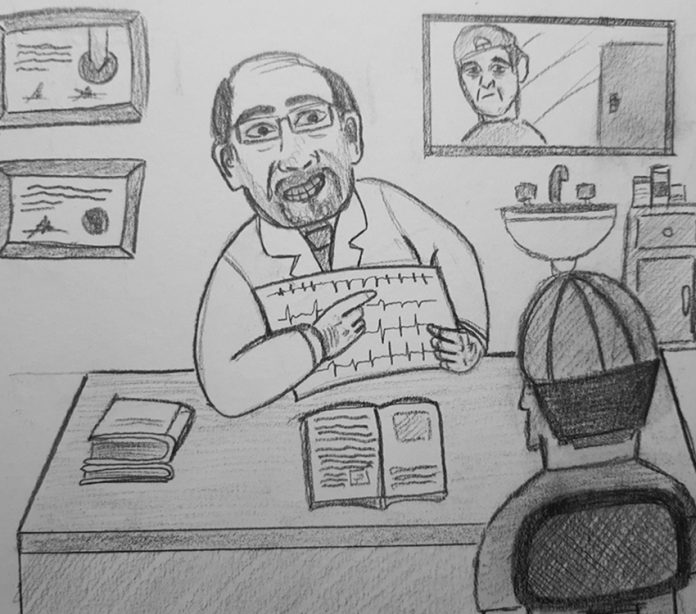I’ve been trying to get medical insurance that will cover me here in Mexico. I say, “trying” because I’ve not actually been able to get it yet. But I am making progress. Sort of.
The insurance agent sent me a list of tests I have to have in order to be approved — blood tests, a prostate-specific antigen (PSA) test, and an electrocardiogram (EKG).
I was able to find a doctor — after two unsuccessful previous attempts — who understood what I needed, and I had the blood tests and EKG done. I was told I had to pick up the results and that they’d be ready in three days.
I have learned from previous experiences that when someone says “three days,” I should give them five. Or more.
The results still weren’t ready when I showed up a week later, but when we finally neared the two-week mark, I had them in hand and brought them to the doctor’s office.
That’s when the fun really began.
One interesting thing is that, so far, I’ve not needed to make an appointment at the local clinic to see a doctor. I walk in, try as best I can to tell them why I’m there and get ushered in.
On this occasion, I saw a Dr. Jiménez, a really nice man who wanted to make sure I understood everything in the results. Mind you, this is all being done in Spanish, and although my Spanish is proficient, there are instances where I simply don’t have the vocabulary necessary to understand what’s being said. Like in a doctor’s office, for example.
I should have brought a friend fluent in Spanish with me, but where’s the fun in that?
Dr. Jiménez pulled out my EKG, studied it for a moment and then laid it in front of me. He pointed to the peaks and valleys on the chart and said something I didn’t even come close to understanding.
So he wrote p, q, r, s, t on different peaks and valleys of the EKG and then proceeded to say the letters as he pointed at them. How saying the letters aloud was going to get me to understand what they meant wasn’t at all clear.
But he was very earnest, and at the end of the first round of pointing and naming the letters (there would be several), he smiled and said, “¿Verdad?” which means true.
I must have had a completely confused look on my face because he launched into a second round of pointing at the peaks and valleys and rattling off the letters, after which he looked at me again, smiled and yet again said, “¿Verdad?” I didn’t want to disappoint him — he was a really nice man — so I smiled back and said, “Sí” because I had no idea what else to say.
But, perhaps concerned that I still wasn’t fully appreciating what he was trying to convey, he then drew the same peaks and valleys on a piece of paper, labeled them with the same letters and proceeded to say them aloud again, smiling as always. Then, on another piece of paper, he drew another series of much larger peaks and valleys (I have no idea why), pointed to them and then to mine.
“¿Verdad?” he asked.
“Sí, verdad,” was my reply.
That seemed to satisfy him because he then started to pack up my results. I had to remind him that I needed him to fill out the paperwork the insurance agent had sent me (this was all I actually wanted from the beginning, but he had insisted on explaining things to me). The form was in Spanish, but he seemed to have a hard time understanding what was needed — he stared at it for some time — so I told him again that I just needed the form filled out.
I explained it as well as I could (I was the one doing the pointing this time), and I guess he understood because he called in his assistant and had her read the information from the tests out loud. Why he needed to have them read aloud is anybody’s guess, but it got things moving along nicely.
He wrote down the results on the form, but for some reason, he skipped some. When he handed me the paper, I had to point this out, gently insisting that he please fill out the entire form. Which he finally did.
Completed paperwork in hand, I paid 300 pesos (about US $15) and headed out wondering what the heck was going on with that EKG.
Despite the fact that he was smiling broadly the entire time, I hoped he wasn’t trying to tell me I had some potentially fatal disease.
Joseph Sorrentino, a writer, photographer and author of the book San Gregorio Atlapulco: Cosmvisiones and of Stinky Island Tales: Some Stories from an Italian-American Childhood, is a regular contributor to Mexico News Daily. More examples of his photographs and links to other articles may be found at www.sorrentinophotography.com He currently lives in Chipilo, Puebla.
